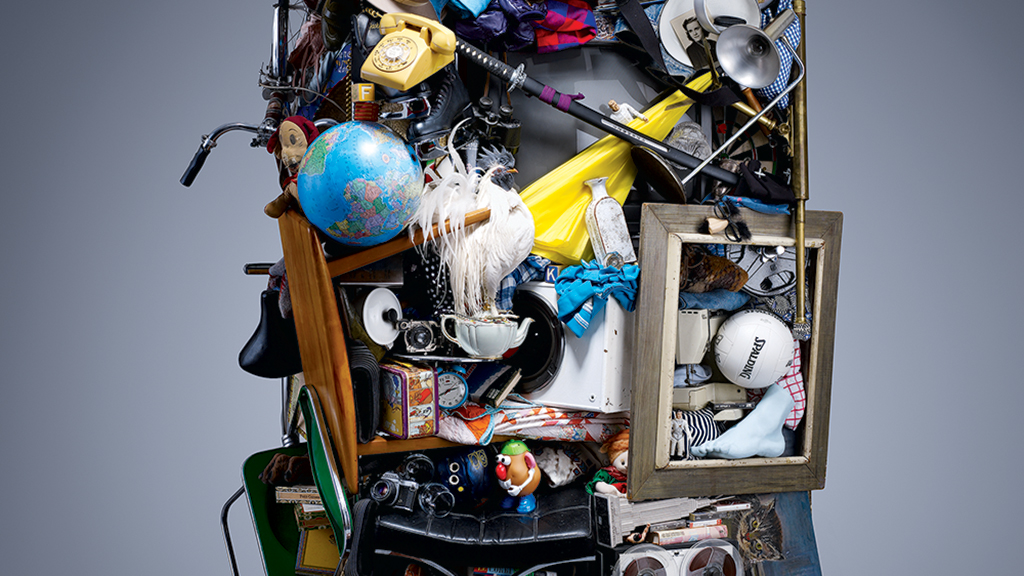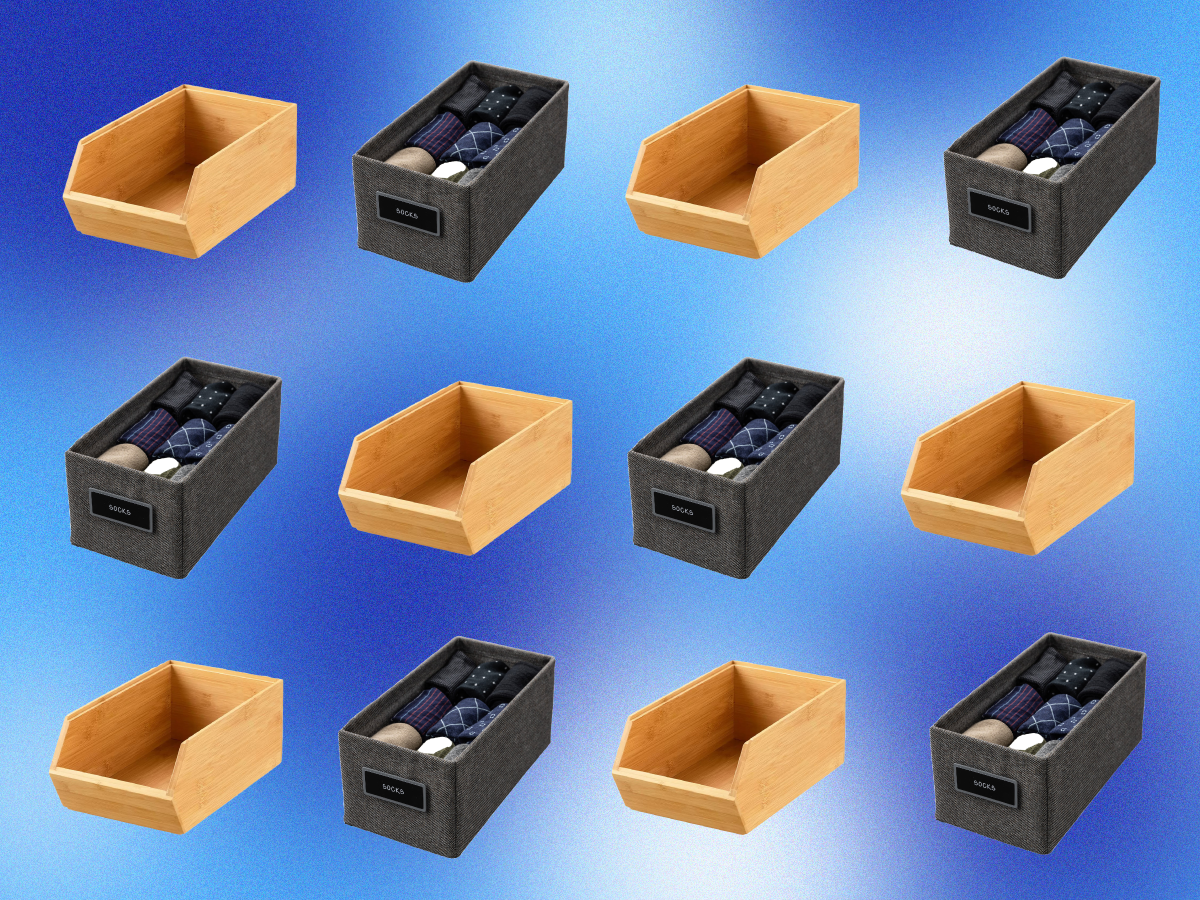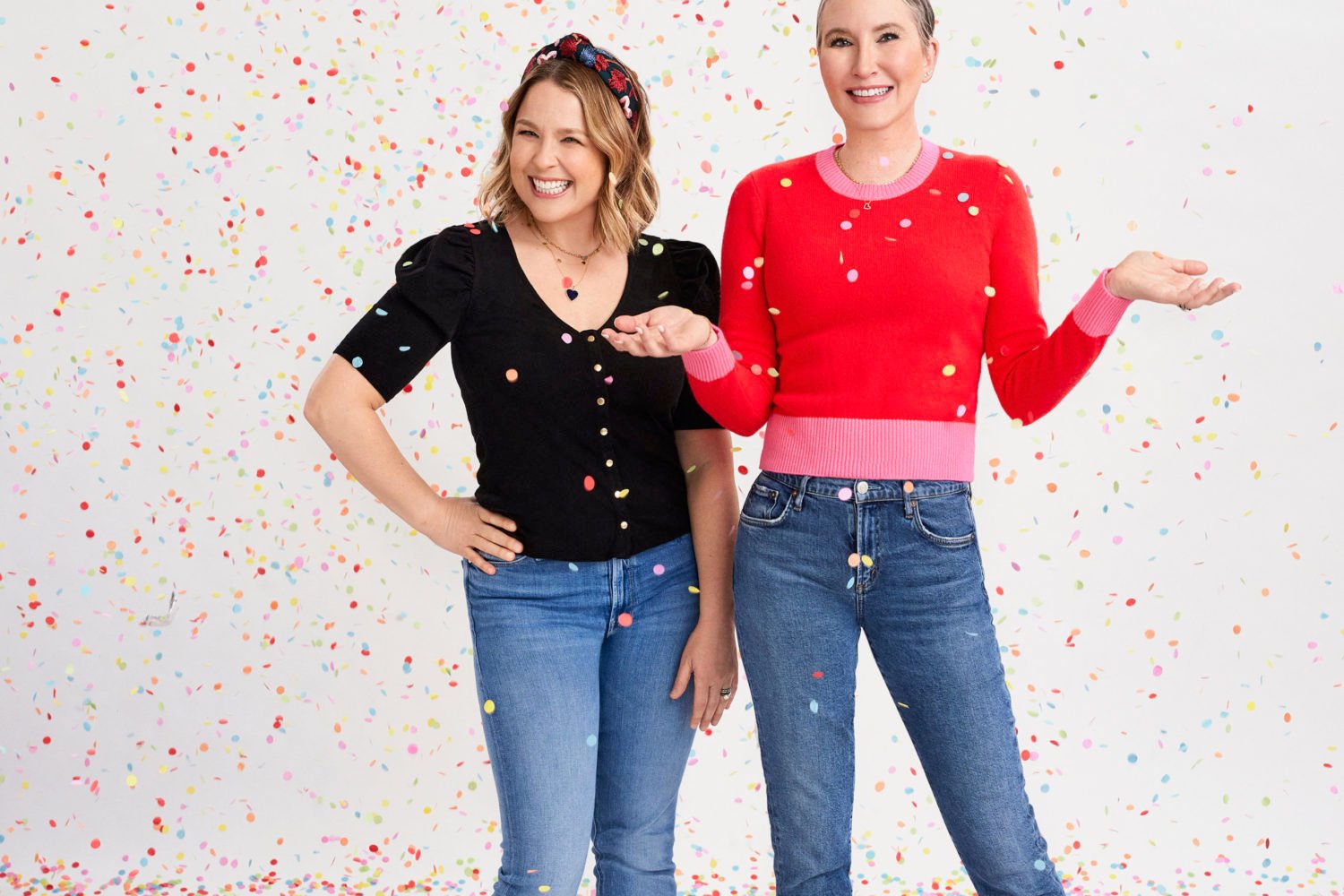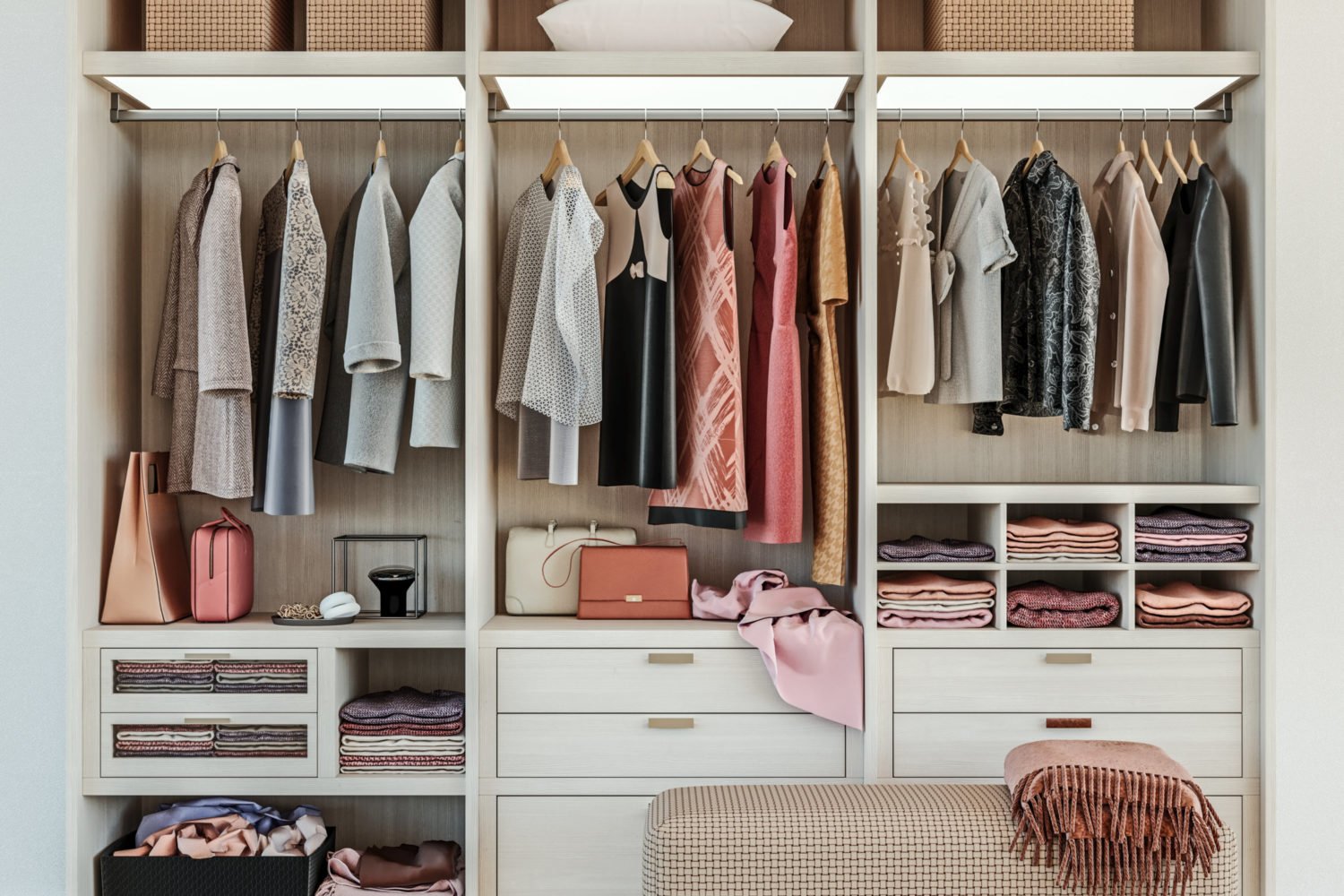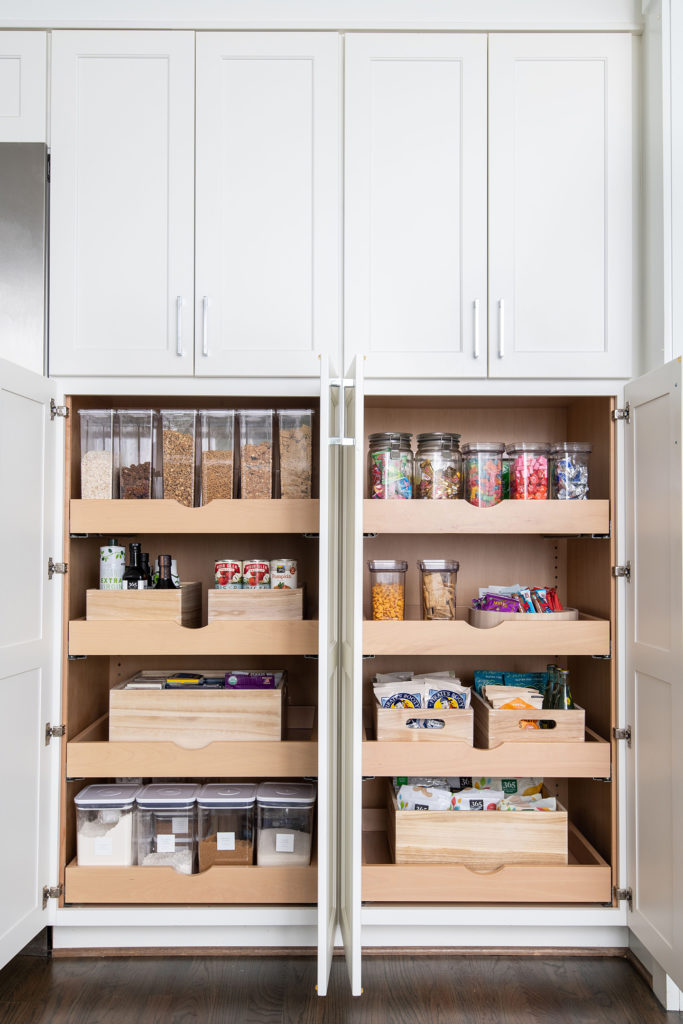
Spring cleaning is upon us, which means it’s probably time to tackle that dreaded junk drawer. (You know the one, brimming with chargers from ghosts of iPhones past and batteries that may or may not have juice left.) Or perhaps you’ll finally venture into the depths of your closets or sort through the mound of mail and receipts on the kitchen table. Regardless of whatever disheveled to-do is on your list this spring, we asked several local organizing experts to share some of their tips for getting—and staying—organized.
1. Define Your Organizing Goal
When Jennifer Albertini, a professional organizer and founder of Decluttered, begins the tidying process with clients, she first has them envision the purpose of their ideal home. For example, if you picture one that’s easy to entertain in, you might focus on making servingware and board games more accessible. Or if you’re striving for a healthier diet, you might dedicate room on the counter for a blender or put nutritious snacks front and center. “It’s not just about ‘Oh, let me deal with all the crap at the bottom of that closet,’ ” she says. “We should think about organizing in terms of ‘How are you creating a space that makes it possible for you to do all the things you really want to do with your life?’ ”
2. Buy Storage Products as a Second Resort
Bamboo bins, rattan baskets, acrylic file boxes—stores have entire aisles dedicated to beautiful storage products. But while Rachel Rosenthal, founder of the DC organizing firm Rachel and Company, loves a sleek yet functional organizer, she’s also the first to recommend you hold off on that trip to Ikea or the Container Store. “Before you purchase anything, you have to know what you’re organizing, what your goal is, and how you actually want it to function,” she says. “Products should always be a second step. Otherwise, you’re just buying products which will end up as clutter.”
3. Keep an Ongoing Donation Bin
To make decluttering a habit and not just a one-and-done deal, stash a dedicated donation bin somewhere in your house, such as in your closet or garage. “It can be literally a paper bag or an Amazon box that you’re recycling, but have something, because it gives you that visual reminder,” says Rosenthal, who adds that an ongoing donation bin makes it easier to follow the “one in, one out” rule, which suggests that for each new item you bring into your home, a similar one must leave.
4. Invest in Double-Duty Furniture
You’ve probably heard it before: “Every item in your house should have a home.” While it’s certainly wise advice, it can be hard to follow when, say, you’re squeezing your life into a tiny apartment. If you’re among those in need of more places to store belongings, Rosenthal recommends investing in furniture that can do double duty. Think living-room ottomans that can hold throw blankets or pillows, entryway storage benches where you can stash umbrellas and pet supplies, or a bed frame with drawers to hold items you may not use daily.
5. Don’t Forget About Vertical Space
Some of the most under-utilized spots are all around us—on our walls. “So many people look at just storing things on surfaces, but we can also think about vertical spaces as a place for shelves or hooks,” says Albertini. You might consider hanging floating shelves in your kitchen for your favorite cookbooks or colorful glassware; installing a sleek wall file in an entryway for catching and sorting mail; or placing an organizer with pockets on the back of a door. “The more you take advantage of floor-to-ceiling space, the more you’re going to maximize what you have,” says Lauren Sadlon, a franchise owner of the Neat Method in Northern Virginia.
6. Maximize the Area Under Sinks
Speaking of unused areas—the empty vertical space below your kitchen and bathroom sinks is “great real estate,” says Rosenthal. “There are tons of different organizers to mimic shelves, and pullouts that you can put underneath there.”
7. Don’t Sleep on Lazy Susans
“Keep what you use most front and center” is a common organizing refrain. However, for people who regularly use a wide variety of items within a small space—think a bathroom vanity or desk—“front and center” space can quickly dwindle. This is where a lazy Susan can come in handy, says Sadlon. If you have regularly used cosmetic products strewn about your counter, or office supplies scattered atop your desk, try corralling them onto a single or two-tiered lazy Susan, where they’ll be equally accessible.
8. Avoid Separating Clothes by Season
People often rotate the items in their closet, storing off-season clothing under a bed or in bins at the back of closets. Albertini recommends against this: “If they’re storing clothes in too many places, people forget what they have, and that leads to a lot of over-buying.” She prefers that people keep all their clothes accessible but separated by category, such as sweaters, T-shirts, blouses, jeans, and slacks. By seeing all the items together, she adds, you may be surprised by the new combinations you can create.
9. File-Fold Your Clothes
When it comes to dressers, chances are you’ve been folding your clothing into flat, stacked units in drawers. If this works for you, that’s great, but for a lot of people it’s hard to find what’s beneath the item at the top, prompting messy excavations into neat stacks. It’s why Albertini, Rosenthal, and Sadlon are among the many organizers who proselytize about “file-folding,” which involves creasing your clothes a few extra times so they can stand upright against one another, like files in a cabinet. “That way, you can actually see what you have and you’re not digging underneath to see what’s there,” says Rosenthal, who adds that drawer dividers are a great way to make file-folding easier.
10. Try a Shoe Bin Instead of a Shoe Rack
When we’re eager to hit the couch, it’s easy to kick off our shoes in haste, even if an open rack for them waits nearby. It doesn’t take long for one pair of shoes to become a pile near the door. “I can tell you that a lot of times, for adults and children, that extra step of putting shoes on the rack is just not going to happen,” Rosenthal says. An easy fix: an open and stylish shoe bin. “It’s easy for cleanup or for someone coming home from work to just throw their shoes into it.”
11. Place Hooks and Other Storage Items at Kid Level
A common problem in homes with young children is coat racks or hangers that loom out of reach. The result? “Kids’ backpacks and coats end up on the floor,” says Rosenthal, who suggests installing a row of hooks at their level using Command Strips, which are easy to adjust as a child grows taller. The same “keep within reach” rule applies to other rooms. “If you want your kids to have access to things they’re able to help you out with,” Sadlon says, “such as having access to their own snacks so they can be a little bit more self-sufficient, then prioritize keeping those items within reach.”
12. Digitize What You Can
While there’s nothing wrong with keeping some sentimental items—children’s art, thoughtful letters, homemade cards—if you find yourself dealing with piles and piles of old drawings and cards, there’s an easy fix: Digitize them, says Sadlon, who uses the app Artkive to turn her children’s artwork into personalized books.
13. Make Organizing a Way of Life
Decluttering shouldn’t be a chore you cross off a list once a year but rather an ongoing practice. “There’s a really powerful connection between the state of our homes and our personal health, and people should consider decluttering and tidying to be an investment in their well-being,” says Albertini. To make it a habit, set aside small windows of time, either at the end of each day or at the end of the week, to put back things that have fallen out of place: “It doesn’t have to take a lot of time—just ask yourself, ‘What do we need to do to reset to feeling like the home is calm, organized, and decluttered?’ It’s about creating a space that lets us thrive.”
This article appears in the March 2024 issue of Washingtonian.





